PC Gamer's Best of CES 2023 awards
The tech from this year's show that caught our eyes... and our hearts. Aww.

The Consumer Electronics Show of 2023 is over, the cleaners are in sweeping up lanyards, USB sticks, and free pens, and we're handing out our Best of CES 2023 awards like so much sweet, sweet candy. It's been an interesting year on the PC side, with a typical focus on new generations of laptop processors and graphics cards, some scary torment nexus shenanigans from the more esoteric side of CES, and more OLED gaming monitors than you can shake a redundant LCD backlight at.
The big three have been busy showing off their wares, with Nvidia launching a new GPU during the show itself, the RTX 4070 Ti, and fessing up on what it's going to do with all those RTX 4080 cards that people didn't buy—namely sticking them in servers to power a new Ultimate tier for GeForce Now. Also, laptop GPUs, lots of laptop GPUs.
AMD announced one mobile graphics card itself and, like Intel, launched it's next generation of laptop processors, too. Again, like Intel, it also showed off its lower power, 65W versions of its new desktop processors. Unlike Intel, however, it also revealed its vaunted new gaming chips, the Ryzen 7000 X3D CPUs.
Though the bright lights of Vegas eluded us this year we've still been taken on virtual tours of all the good stuff the show is promising the tech world for the year ahead. And these are our picks for the best goodies coming out of CES 2023.
Best gaming monitor
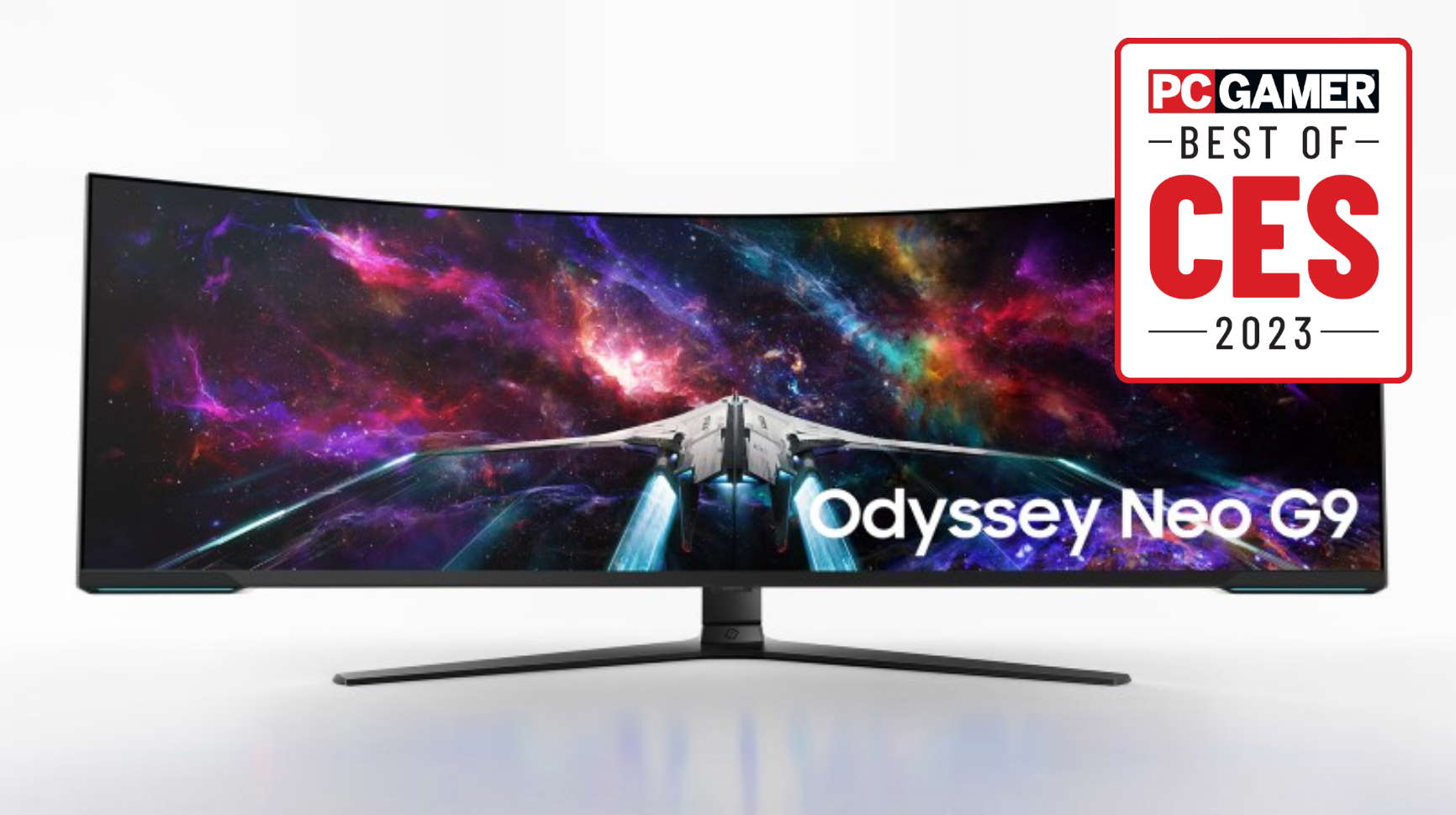
Samsung Odyssey Neo G9
As an ultrawide aficionado, the Samsung Odyssey Neo G9 is very nearly my dream monitor, and one I'm sure I won't be able to afford. With its dual UHD 7680 x 2160 resolution, mini-LED tech, 240Hz refresh rate, HDR1000 and DisplayPort 2.1, it's the kind of screen I could foresee using for the next ten years. Who knows, by then there might be a GPU that can actually drive it at 240 FPS.
I'm not sold on the idea of using an OLED screen for day to day desktop use with lots of static content, so I consider this to be an excellent all rounder that ticks almost all the boxes.
Actually, it probably won't fit on my desk, but this is the kind of screen I would buy a new desk for. Or a new house. Only half kidding on the latter.
The biggest gaming news, reviews and hardware deals
Keep up to date with the most important stories and the best deals, as picked by the PC Gamer team.
Best laptop CPU

AMD Ryzen 7040 Series
CES 2023 has not, in all candour, blown my socks off. The disappointments of 2022, particularly in the graphics market, have continued with Nvidia’s exasperatingly expensive $800 mid-tier RTX 4070 Ti board.
On the CPU side of things, however, things are looking brighter and AMD looks to have another mobile killer in the new Ryzen 7040 Series laptop APU. For me, it’s by far the more significant chip than the equally new Ryzen 7045 processor.
The latter is just the existing Ryzen 7000 desktop CPU stuffed into a laptop. That’s fine, and all. But it’s only going to be relevant for really beefy desktop replacement rigs. And in any case, its main claim to fame is offering up to 16 cores. Which is utter overkill for gaming.
Indeed, for my money it’s the Ryzen 4070 that’s the real laptop chip. It comes with up to eight cores, which is plenty for gaming. It’s also based on TSMC’s 4nm node.
Granted, the 4nm node is really just a tweaked version of 5nm. But it does offer slightly better efficiency than TSMC 5nm and it’s pretty much right at the bleeding edge. Which bodes well for battery life. On which note, AMD is claiming up to 30 hours. Wow.
Then there’s the chip’s AI engine. OK, for now the benefits of this are unproven. But I’m of the view that it could become useful sooner than you think. Including for gaming. Even if not, the Ryzen 7040 is going to make for some very powerful but also slick, slim and surprisingly long lasting gaming laptops. Hurrah.
Best desktop CPU
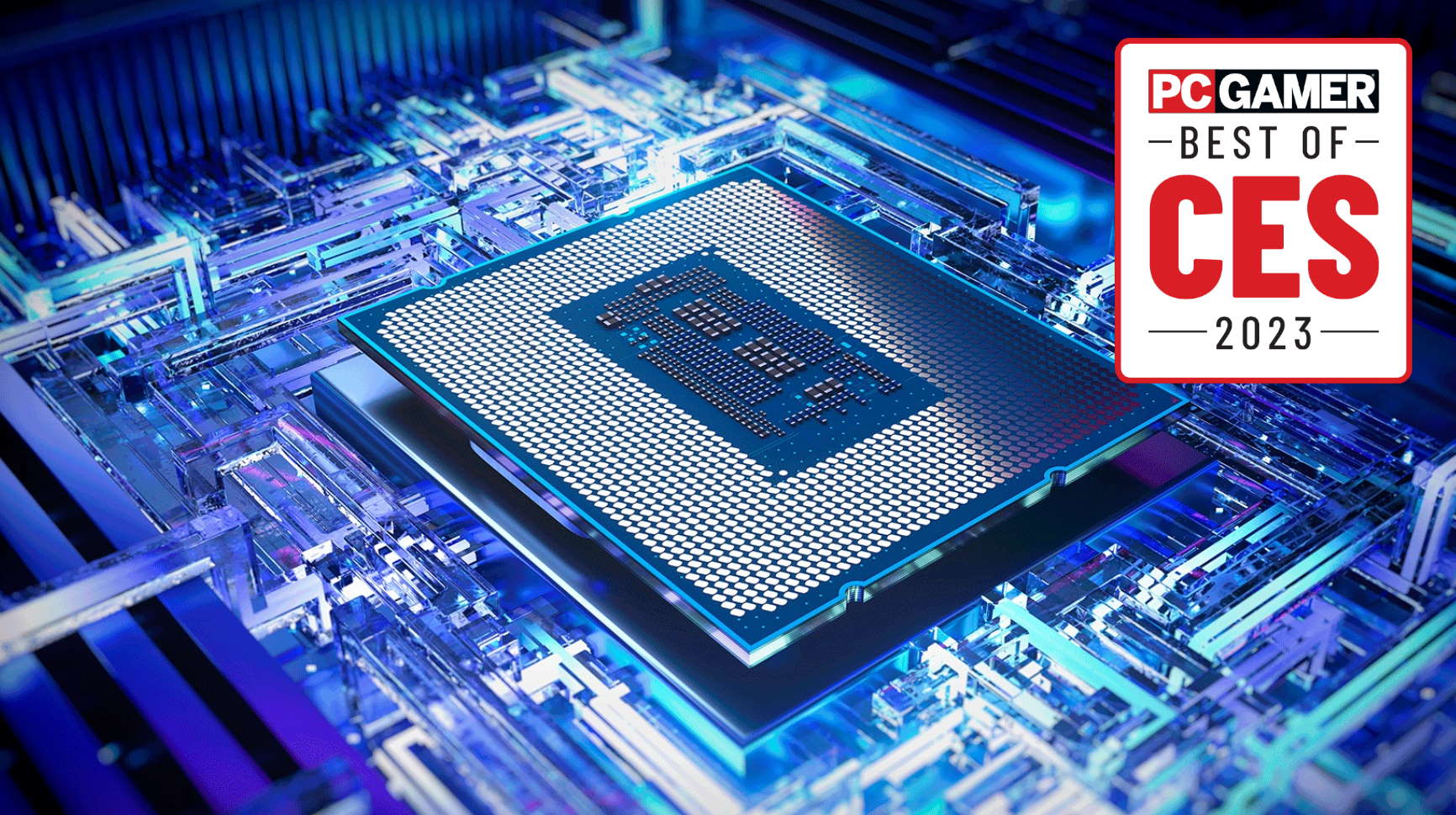
Intel Core i5 13400F
We loved the last-gen Intel Core i5 12400 CPU from last year, in fact it was the highest score that I gave any product I reviewed in the whole year. And now Intel has released it's 13th Gen successor, the Core i5 13400. We've got the F-series version in the labs right now, the cheaper chip without onboard graphics, which is the one we'd generally recommend for a dedicated gaming rig.
So, what makes this generational CPU update our pick for best desktop CPU from CES 2023? The old i5 12400 sported six of the Alder Lake Performance cores, but lacked the architecture's ability to utilise smaller Efficient cores for added multi-threading chops. And, despite rumours that lower spec Raptor Lake processors would simply be rebadged 12th Gen chips, Intel has added four E-cores into the new Core i5 design.
That means you get six big P-cores and four smaller E-cores for your ~$210, which in turn translates into a full 16 threads of processing power. In short, more than enough for any modern PC game and a lot of grunt for productivity workloads, too.
A fast chip, a multi-threaded chip, and more importantly a cheap chip. In a world where prices of most PC components are going up with often only modest improvements, this mainstream Intel chip already looks like a winner to us. And that's before you get into the potential of BCLK overclocking, which is possible with some B660 and B670 motherboards, and could mean you get a lot more CPU performance out of it.
The Core i5 12400 started out with a limit of 4.4GHz, but I was able to get mine to run comfortably at a solid 5.2GHz with little effort. If the i5 13400 can match that why would you buy any other processor?
Best gaming laptop
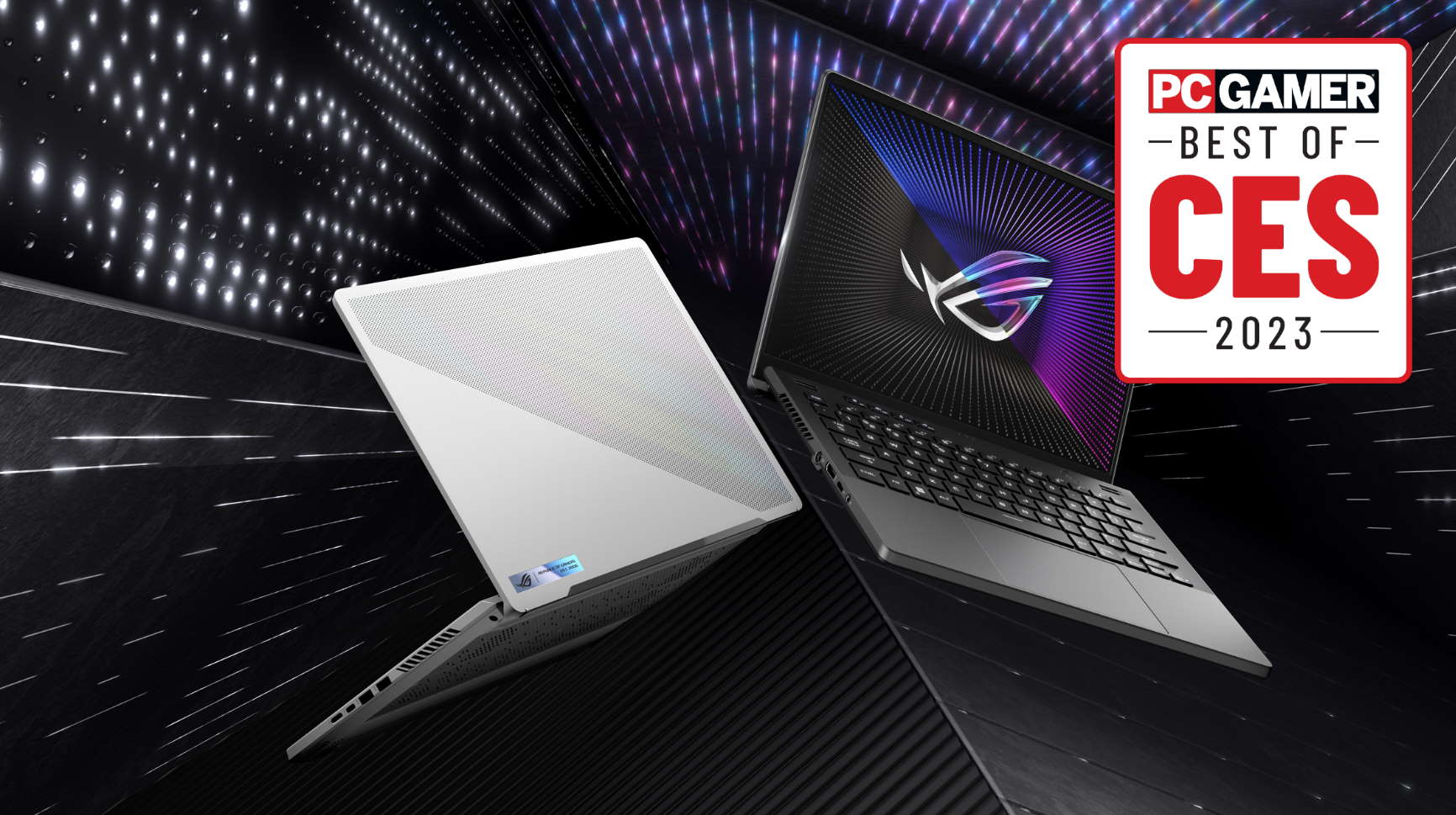
Asus ROG Zephyrus G14
The upcoming 2023 Zephyrus G14, in its miniscule form factor, will come packing anything up to a Nvidia GeForce RTX 4090 and AMD Ryzen 9 7940HS. And although the GPU will max out at 125W compared to something like the upcoming Razer Blade 16's 175W GPU, that nerf was a necessary evil to shrink the beast down into a 14-inch laptop.
Whether the Thermal Grizzly vapor chamber cooling system will be able to handle the temperatures we're expecting from a next-gen machine like this, is another matter. And yet it's already looking like an impressive feat.
It's made all the sweeter with the promise of DDR5-4800, up to 1TB of PCIe 4 storage, a 1080p camera, and a nifty little AniMe Matrix pixel display on the backside of the monitor for showing your personality a bit.
We've had an affinity for the Zephyrus G14 for a while, and we're expecting great things from this little AMD/Nvidia champ in 2023.
Best desktop replacement
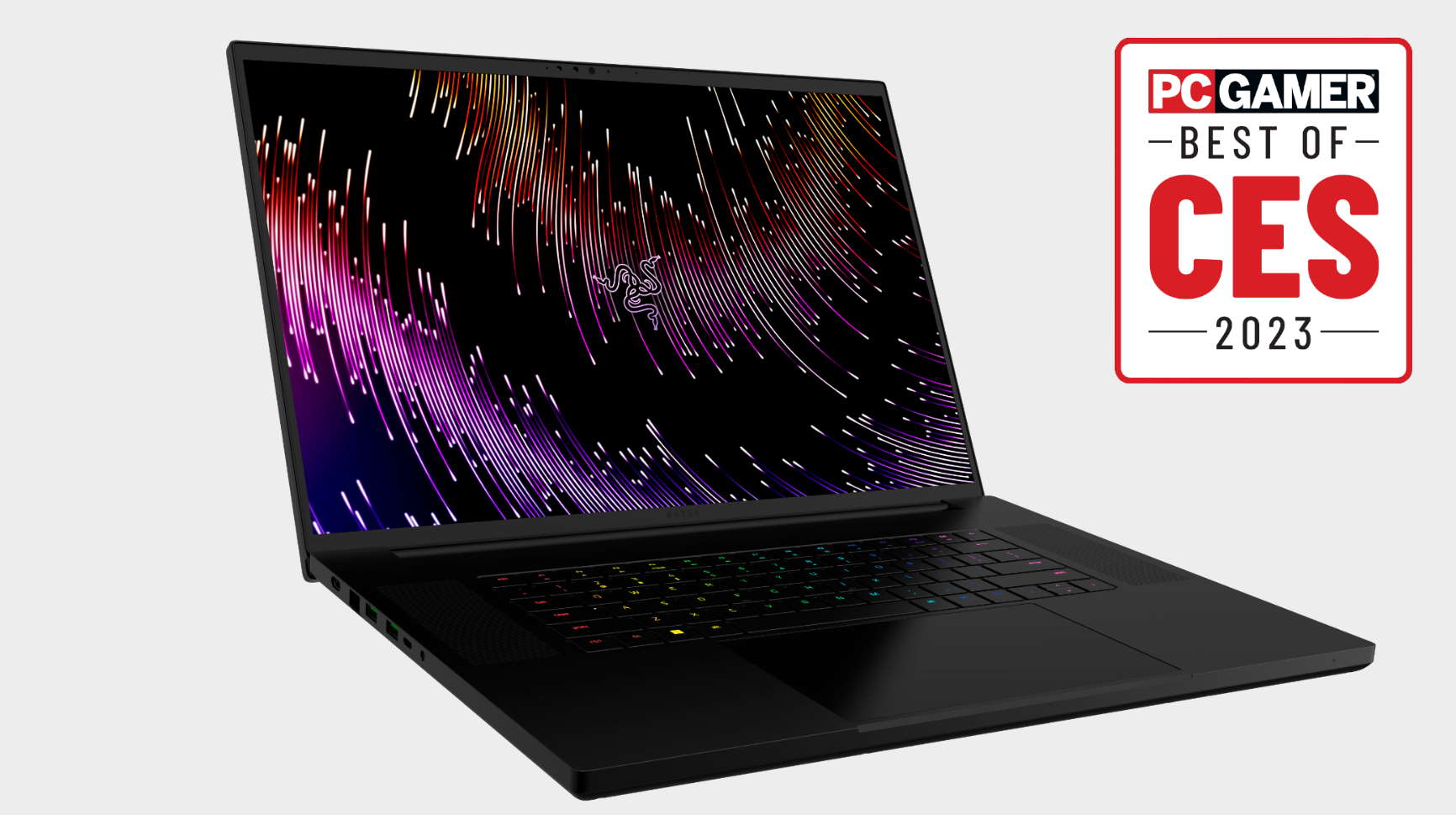
Razer Blade 18
If you basically want a mobile desktop that you can fold up and take with you the desktop replacement laptop is the system for you. And CES has just made them cool again.
This year will see the rise of monster 18-inch laptops, sporting 65W desktop-level processors and mighty RTX 4090 graphics chips. Oof. Their scale means they ought to have the chip chilling chops to cope with the demands of such high-end hardware, and for our money the Razer Blade 18 is the best-looking of the bunch.
It sports a QHD+ 240Hz screen, and that means we should be looking at a 2560 x 1600 panel with a 16:10 aspect ratio. It's also blessedly light on the bezels, too, which means that even though the screen is 18-inches across, it doesn't necessitate a much bigger chassis than its 17-inch predecessors.
Razer is also promising plenty of ports and upgradeable memory and SSD support, too. Considering this is likely to be a particularly professionally focused machine, for on the go video editors, etc. that will all come in handy.
Big is back, baby.
Best gaming keyboard
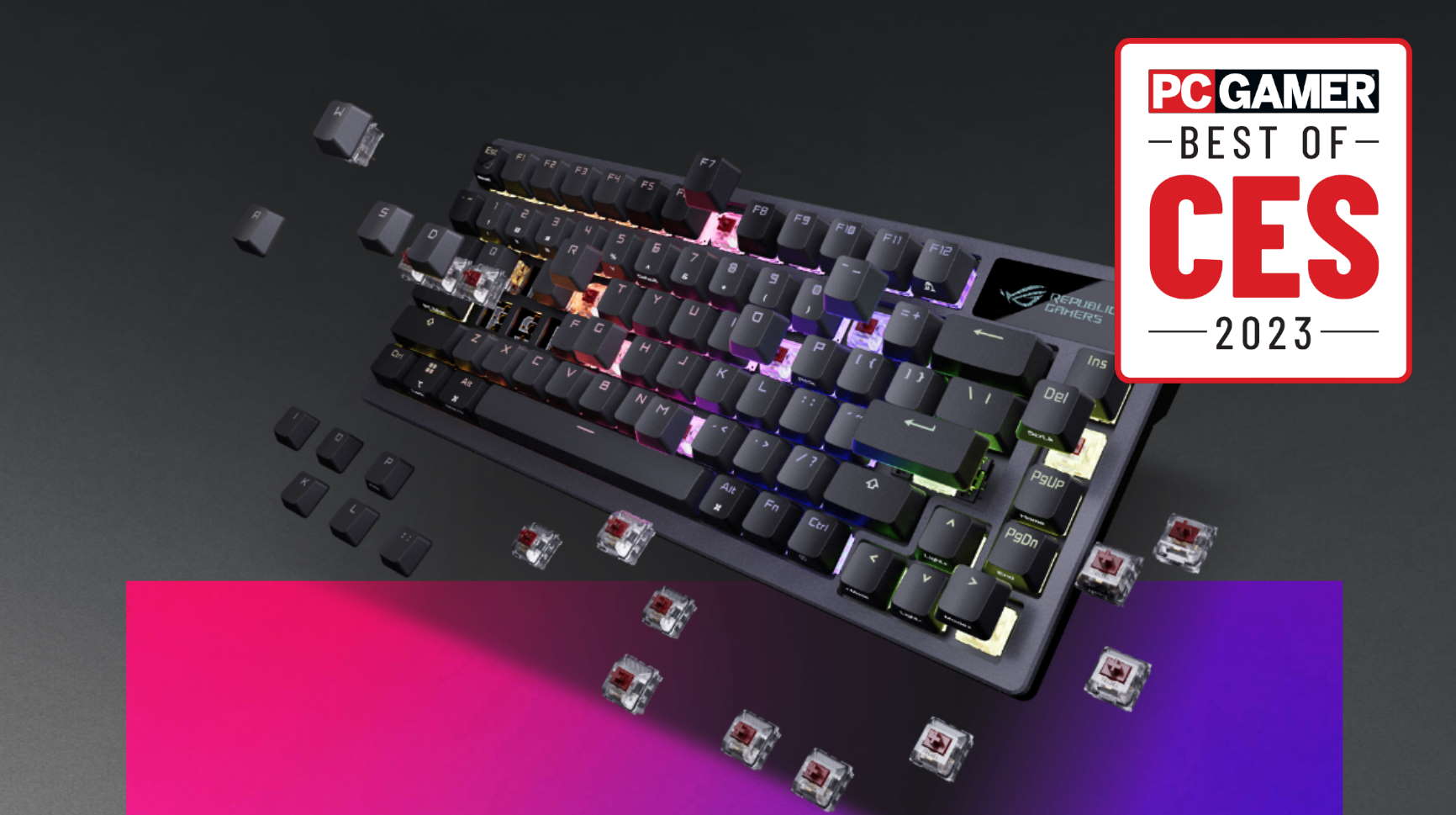
Asus ROG Azoth
I'm actually typing on this very keeb right now, and the Azoth it absolutely is the finest keyboard Asus has ever created and the best tippy tapper to come out of this year's CES. It's not a cheap board, but then this is Asus' first real foray into the world of the enthusiast keyboard. And it's got that ROG branding, too.
It's also a lethally weighty board as well, being wrapped in a solid metal surround. The typing experience is great, with Asus' custom ROG NX switches doing an impressive job for the company's first mechanical switches. But you don't have to stick with those, because the Azoth is a hot-swappable and you can drop in whatever your preference might be.
Me? I'm going to drop in a bunch of Halo True switches and be in hog-keeb-nerd-heaven.
There's also a wee OLED panel in the top right, to display which profile you're on, how much battery is left, and whether you're connected via 2.4GHz wireless or Bluetooth. There's also a multi-function rocker switch allowing you to control media, volume, brightness, and lighting effects.
It's also not a 60% board though it is super smol. With function keys, cursor keys, and those other navigation keys in the diminutive design it's got all you need. Unless you're a sucker for Alt codes, and need a numpad like our Jacob. He's useless without one.
Best gaming service

Nvidia GeForce Now Ultimate RTX 4080 membership
Nvidia has figured out what to do with the RTX 4080 cards that people haven't been buying; stick 'em in the cloud. The RTX 3080 tier of GeForce Now has only been with us a relatively short time and it is being topped by the new Ultimate Tier which is going to give user access to the new RTX 4080 Superpods.
Along with the undoubted gaming power of the Ada architecture in the RTX 4080 GPU, that also give GeForce Now users access to both DLSS 3 and Frame Generation in supported games. And that really is a game changer. It also means you're going to be able to experience high performance ray tracing all the way up to 4K resolutions at high refresh rates, too.
But that's not all the Ultimate Tier will bring, either, because it also delivers Reflex to allow competitive gaming across the cloud at up to 240Hz and with latency as impossibly low as 23ms. Somehow...
You can also finally use ultrawide monitors at native resolution, and run 4K games at 120fps on the native PC and Mac applications.
And the best bit? The price isn't changing. Nvidia may be charging us a ridiculous premium for the RTX 4080 on the desktop, but current RTX 3080 GeForce Now members will be switched to Ultimate at the same $20/month price. The service will begin rolling out in North America and Europe later in January.
Most innovative product
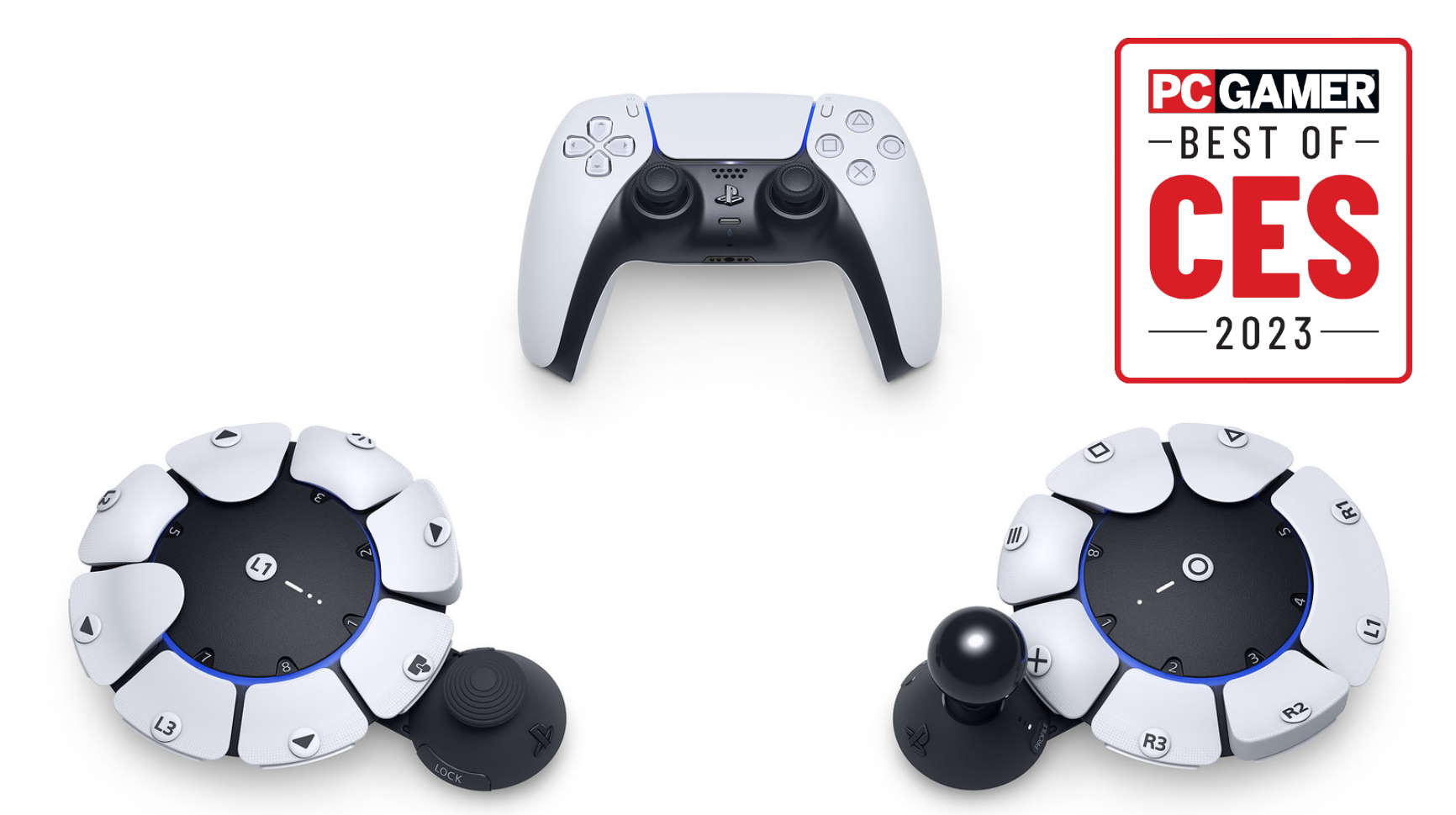
Sony Project Leonardo
I wouldn't usually be one to choose a Sony announcement for my best in show—this is PC Gamer after all—but this year the console goliath and tech company has released something that will offer more gamers a chance to experience the latest games. You can't argue with that. It's called Project Leonardo, and yes it does appear to be named after the Ninja Turtle.
Sony's Project Leonardo is an accessibility controller with tons of customisability. It's designed to remove barriers that exist for some gamers with disabilities, and in doing so allow more people to enjoy the hobby we so love. In some ways it's Sony's take on Microsoft's excellent Xbox Adaptive Controller, though they couldn't look more different.
Project Leonardo will work on its own, in tandem with another unit, or even with a DualSense controller. It also comes with extra aux ports for further accessories, which is similar to the Xbox unit and means kits like Logitech's Adaptive Gaming Kit would work with it too.
"Because players can customize Project Leonardo according to their needs, there is no one ‘right’ form factor," says designer So Morimoto. "We want to empower them to create their own configurations. The controller can also flexibly accept combinations of accessibility accessories to create a unique aesthetic. I am excited that the design will be completed through collaboration with players rather than presenting them with a single form factor."
We're still waiting on some further info on this controller, including on whether it'll play nicely on PC and how much it'll cost. Sony teamed up with some excellent charities for the controller's development, including AbleGamers, SpecialEffect, and Stack Up, so we're hopeful that when it's in the homes of its target audience it'll make a real difference.
The runner-up for cool CES controllers is Asus for slapping an OLED on an Xbox pad—these things are not the same.
Most promising future tech
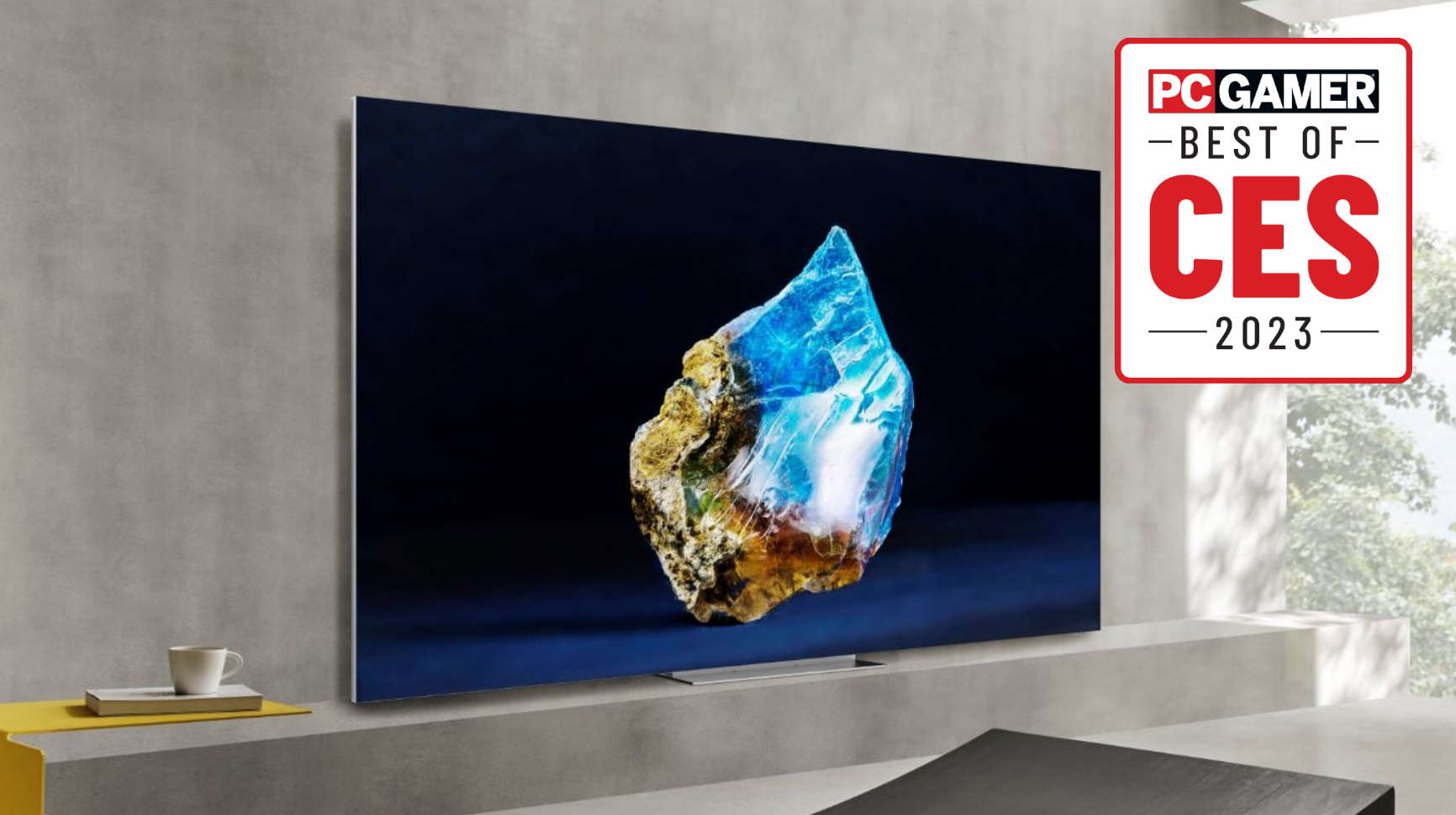
Samsung MicroLED CX TV
Bear with us on this one, because the numbers are a little scary on this one. Samsung is promising us microLED TV panels that are 500,000 times faster than its latest OLED displays.
The MicroLED CX panels announced at CES a promising response times in the region of 2ns. That's nanoseconds where we've previously measured pixel response in milliseconds and thought that was still pretty damned quick. That's one thousandth of a second, so it is quick, but a nanosecond is one billionth of a second. That's five million times quicker than a fast 1ms LCD gaming monitor.
Jeez.
That basically means Samsung's new panels are effectively responding instantly to a change in the display. It's like the end-game for pixel response times. The company is stating that its new TVs will be the cheapest microLED sets ever, but that is still likely to run into many thousands of dollars, pounds, euros, or whatever currency you wish to throw at Samsung for the privilege.
No doubt it will be a while before we see such promising new tech arrive in our gaming monitors—size is reportedly still a bit of an issue with microLED displays—so, until then I guess we'll have to make do with the imminent glut of OLED gaming screens and slum it with their ridiculously slow 0.3ms response times.

Dave has been gaming since the days of Zaxxon and Lady Bug on the Colecovision, and code books for the Commodore Vic 20 (Death Race 2000!). He built his first gaming PC at the tender age of 16, and finally finished bug-fixing the Cyrix-based system around a year later. When he dropped it out of the window. He first started writing for Official PlayStation Magazine and Xbox World many decades ago, then moved onto PC Format full-time, then PC Gamer, TechRadar, and T3 among others. Now he's back, writing about the nightmarish graphics card market, CPUs with more cores than sense, gaming laptops hotter than the sun, and SSDs more capacious than a Cybertruck.
- Jeremy LairdHardware writer
- Jacob RidleyManaging Editor, Hardware
- Chris SzewczykHardware Writer
- Katie WickensHardware Writer

